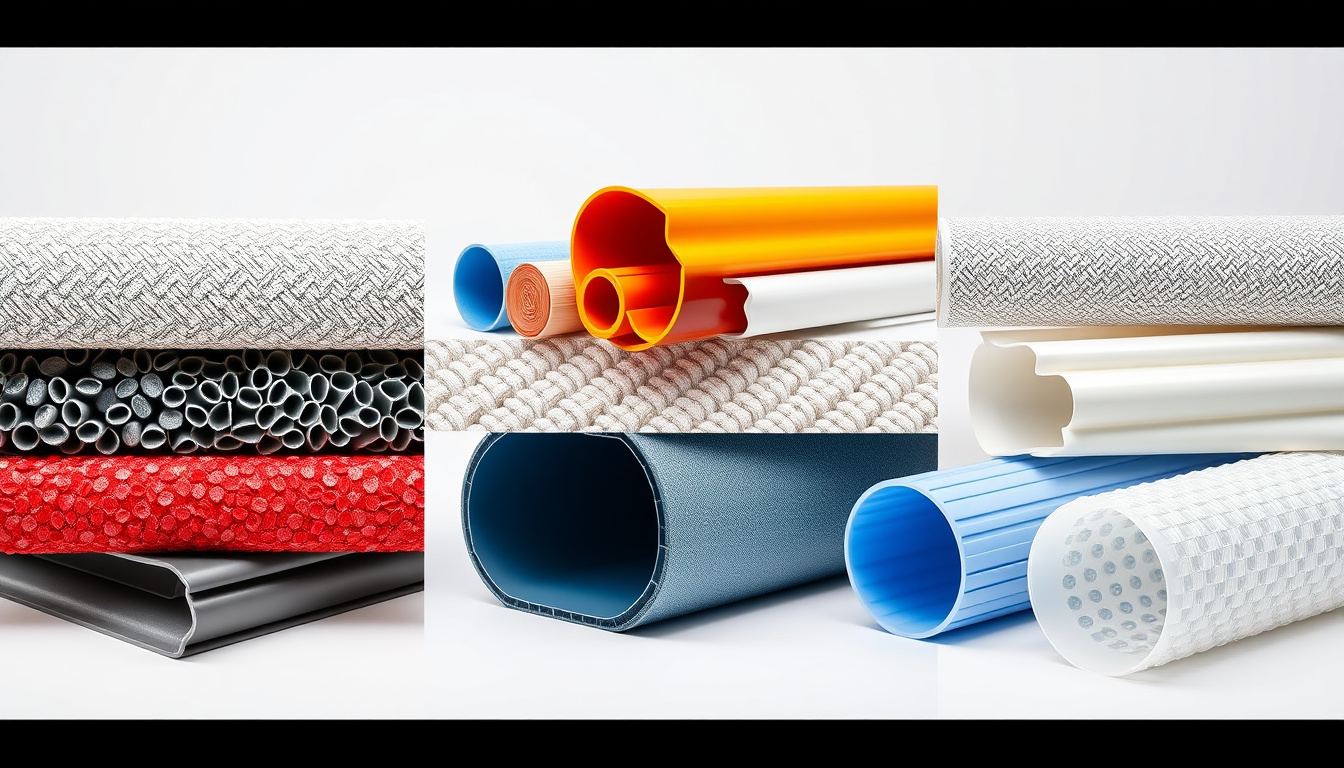
27 Mar Unlocking the Benefits of Extruded Materials: A Comprehensive Guide to Applications and Advantages
In today’s rapidly evolving manufacturing landscape, the search for innovative materials and efficient production methods is paramount. One process that has consistently stood out is extrusion, which involves shaping materials—predominantly plastics, metals, and ceramics—into continuous profiles. This article delves into the world of extruded materials, exploring the intricacies of the extrusion process, their diverse applications across various industries, and the numerous advantages they offer. Whether you are an engineer, designer, or simply curious about manufacturing processes, understanding extruded materials can help unlock opportunities for enhanced product development and design. Join us as we explore the transformative potential of extruded materials and their place in the future of manufacturing.

Key Takeaways
- Extruded materials play a crucial role in various industries due to their versatility and efficiency.
- The extrusion process involves shaping materials by pushing them through a die, resulting in uniform products.
- Key applications of extruded materials include construction, automotive, and consumer goods sectors.
- Advantages of extruded materials include reduced waste, enhanced structural integrity, and cost-effectiveness.
- Future trends in extruded materials point towards advancements in technologies and sustainable practices.
Introduction to Extruded Materials
Extruded materials play a pivotal role in various industries, thanks to their unique properties and versatility. The extrusion process involves forcing material through a shaped die, resulting in long shapes with consistent cross-sections. Commonly used in manufacturing plastics, metals, and even food products, extruded materials are renowned for their ability to be produced at high volumes and with precise tolerances. This method not only enhances the durability and performance of the final product but also allows for intricate designs that cater to specific applications. From architectural components to automotive parts, understanding the fundamentals of extruded materials is essential for anyone looking to delve deeper into modern manufacturing techniques.
Understanding the Extrusion Process
The extrusion process is a modern manufacturing technique widely used for creating products in various industries, particularly in plastics and metals. Essentially, the process involves forcing material through a shaped die to produce long objects with a constant cross-section. The benefits of using extruded materials are numerous, including the ability to create complex shapes, improve material strength, and reduce waste. For instance, in the plastic industry, extruded products can range from simple sheets and films to intricate profiles and pipes. Additionally, the extrusion process allows for customized finishes and colors, catering to specific client needs while ensuring efficiency in production. Understanding how the extruded materials are processed not only enhances manufacturing capabilities but also plays a crucial role in meeting rigorous industry standards.
‘The greatest innovation is in the simplest of things, and that is where true progress is made.’ – Unknown

Case Studies: Success Stories in Extrusion
When examining success stories in the field of extrusion, several case studies demonstrate the versatility and innovation that extruded materials can bring to various industries. For example, the packaging industry has seen a remarkable enhancement through the adoption of extruded films, where companies have significantly reduced waste and improved product shelf life. One leading manufacturer utilized advanced extruded processes to develop biodegradable films, not only meeting consumer demand for sustainable packaging but also reducing their overall carbon footprint. Similarly, in the construction sector, extruded aluminum profiles have revolutionized the design and strength of modern architecture by providing lightweight yet durable structural elements. Another success story includes the automotive industry, where extruded components have achieved better performance and reduced weight, contributing to greater fuel efficiency in vehicles. These case studies illustrate that the future of manufacturing is increasingly reliant on the capabilities of extruded materials, showcasing their potential to foster innovation across varied applications.
Future Trends in Extruded Materials
The landscape of extruded materials is evolving rapidly, driven by advancements in technology and growing demand in various industries. As manufacturers strive for increased efficiency and sustainability, future trends in extruded materials will predominantly focus on customizability and eco-friendliness. One prominent trend is the development of bio-based extruded materials, which are made from renewable resources and are designed to reduce environmental impact. Additionally, the incorporation of advanced additives and reinforcements will lead to stronger, lighter, and more versatile extrusions that meet the specific needs of sectors like construction, automotive, and packaging. Furthermore, the integration of smart technologies in the extrusion process itself will facilitate real-time monitoring and quality control, ensuring superior product consistency. As industries adopt these innovative extruded materials, companies can expect improved performance, reduced production costs, and a shorter time to market, positioning themselves competitively in a rapidly changing environment.

Sorry, the comment form is closed at this time.